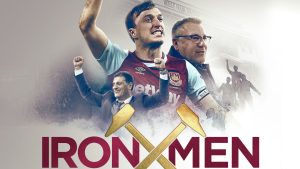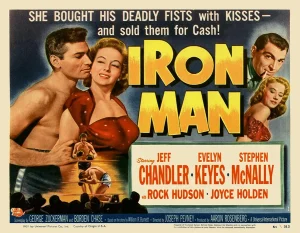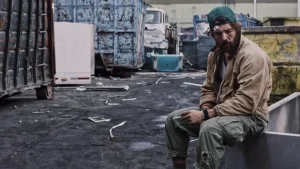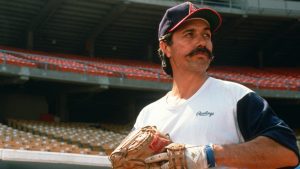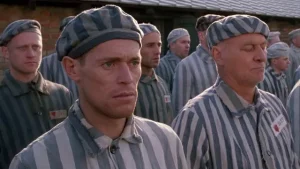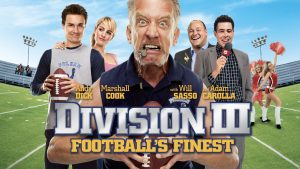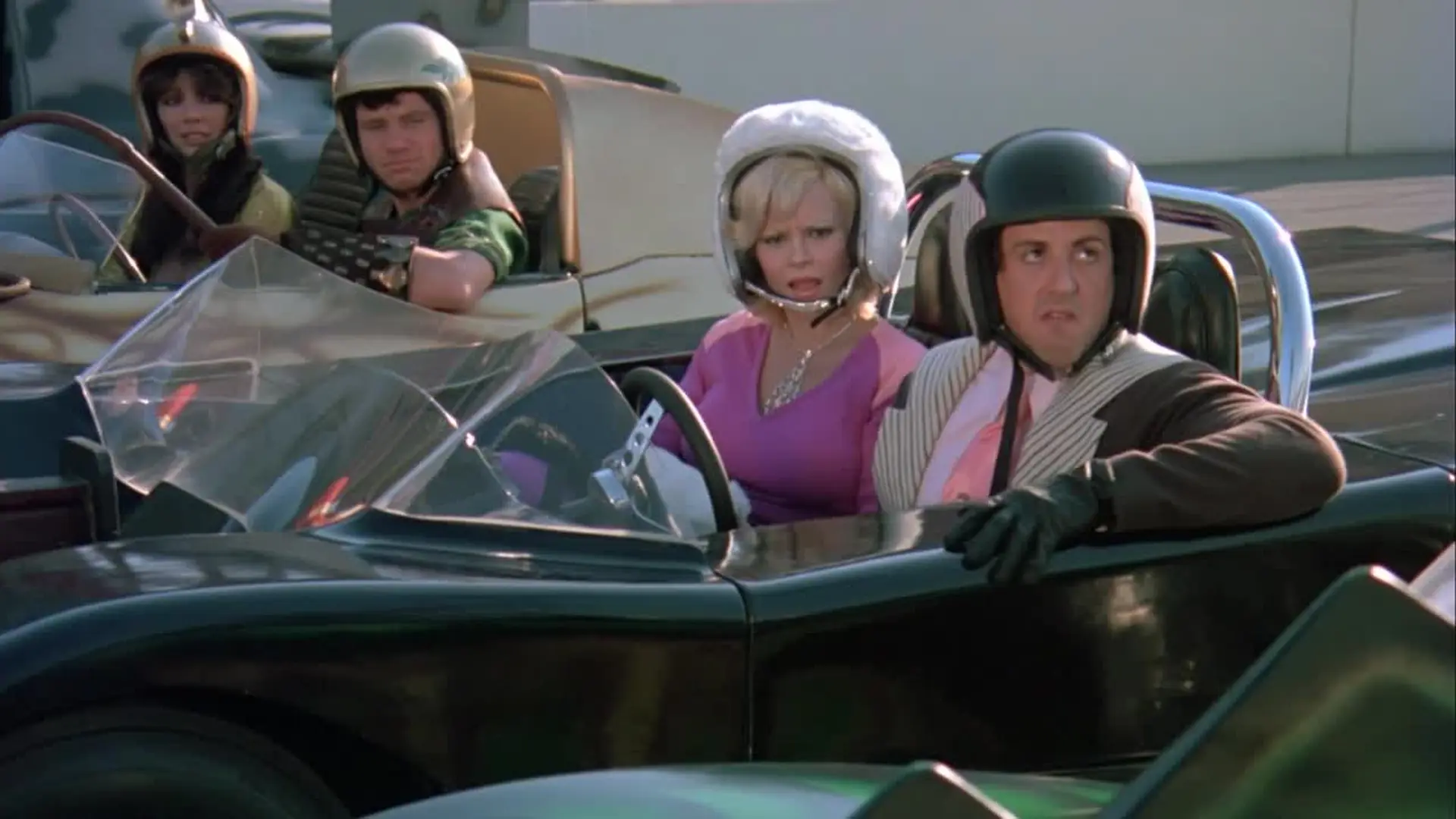
What Is The Death Race 2000 (1975) About?
“Death Race 2000” is a cult classic film released in 1975, directed by Paul Bartel and produced by Roger Corman. The film is set in a dystopian future where the United States is ruled by a totalitarian government led by a character called Mr. President. In this society, the most popular sport is the “Transcontinental Road Race,” also known as the “Death Race 2000.”
The premise of the race is that drivers compete in a cross-country road race where they score points by running over pedestrians. Each contestant is assigned a navigator, and they drive heavily modified vehicles designed for speed and destruction. The race is televised nationally, and the public eagerly follows the action.
The main character, Frankenstein, played by David Carradine, is a legendary racer who has been severely injured in previous races but has been rebuilt with various mechanical parts, making him part man, part machine. He is the favorite to win the race. His chief rival is the violent and flamboyant “Machine Gun” Joe Viterbo, played by Sylvester Stallone.
As the race progresses, the film explores themes of violence, media manipulation, and the dehumanizing effects of a society obsessed with entertainment and spectacle. Along the way, Frankenstein encounters resistance from rebels who oppose the government and the brutality of the race.
“Death Race 2000” is known for its dark humor, over-the-top action, and satirical commentary on American culture. It has become a cult favorite among fans of exploitation cinema and dystopian fiction.
| Aspect | Description |
|---|---|
| Title | Death Race 2000 |
| Year | 1975 |
| Director | Paul Bartel |
| Producer | Roger Corman |
| Setting | Dystopian future United States |
| Premise | Cross-country road race where drivers score points by running over pedestrians |
| Main Characters | Frankenstein (played by David Carradine), “Machine Gun” Joe Viterbo (played by Sylvester Stallone) |
| Society | Totalitarian government led by Mr. President |
| Main Theme | Violence, media manipulation, dehumanization in a society obsessed with entertainment |
| Style | Dark humor, over-the-top action, satirical commentary |
| Legacy | Cult favorite among fans of exploitation cinema and dystopian fiction |
What Is the Plot of the Movie?
Following the “World Crash of ’79,” a catastrophic event that leads to widespread civil unrest and economic collapse, the United States undergoes significant political upheaval. Under the guise of restoring order, the government undergoes a transformation into a totalitarian regime, imposing martial law to maintain control over the populace. In response to the turmoil and to quell dissent, the government introduces the Transcontinental Road Race, a brutal spectacle designed to distract and pacify the population.
Against the backdrop of societal decay, the annual race has become a national tradition, notorious for its deadly stakes and the ruthless tactics employed by its participants.
Set in the year 2000, the 20th iteration of the race features five drivers, each adopting larger-than-life personas reminiscent of professional wrestlers, and piloting cars tailored to match their distinctive themes. Among them are Frankenstein, an enigmatic figure shrouded in mystery and revered as a national hero; Machine Gun Joe Viterbo, a ruthless gangster hailing from Chicago; Calamity Jane, embodying the spirit of the Wild West as a cowgirl; Matilda the Hun, espousing Neo-Nazi ideology; and Nero the Hero, channeling the bravado of a Roman gladiator.
As the drivers embark on their perilous journey across the country, the race unfolds as a high-stakes battle of wills, where survival and supremacy hang in the balance amidst the chaos and carnage of the road.
In a dystopian world ruled by an enigmatic figure known only as Mr. President, Thomasina Paine leads a resistance group aiming to rebel against the oppressive regime by sabotaging the Transcontinental Road Race and capturing its champion, Frankenstein, as leverage. With the help of Frankenstein’s navigator, Annie Smith, they plan to deceive him into falling into an ambush, but their efforts are covertly covered up by the government, who shift blame onto the French for the chaos.
Initially, the resistance’s plan seems to succeed as chaos ensues during the race: Nero the Hero meets his demise when a pedestrian he runs over turns out to be a bomb, Matilda the Hun perishes by driving off a cliff following a falsified detour, and Calamity Jane inadvertently triggers a landmine after witnessing Matilda’s demise. This leaves only Frankenstein and his chief rival, Machine Gun Joe Viterbo, remaining in the competition. However, despite numerous attempts on his life, Frankenstein remarkably survives each ordeal with apparent ease.
As the race progresses, Annie uncovers a startling truth: Frankenstein’s disfigured face and iconic mask are merely a façade. In reality, he is one of many individuals trained by the state to assume the role of Frankenstein, and each time the current Frankenstein perishes or is severely injured, a replacement is covertly introduced to maintain the illusion of his invincibility.
The current Frankenstein shares with Annie his plan to assassinate Mr. President during the winner’s ceremony by detonating a grenade hidden in his prosthetic hand. However, their scheme is thwarted when Machine Gun Joe Viterbo attacks Frankenstein, prompting Annie to use the grenade to kill Viterbo instead. Despite this setback, Frankenstein emerges victorious in the race, though wounded and unable to execute his original plan. Annie, disguised as Frankenstein, aims to stab Mr. President during the ceremony, but Thomasina mistakenly shoots her, believing she’s protecting Frankenstein. Seizing the opportunity, the real Frankenstein crashes his car into Mr. President’s stage, achieving his lifelong goal of eliminating him. With Mr. President dead, Frankenstein assumes the presidency, marrying Annie and appointing Thomasina as Minister of Domestic Security to rebuild the nation and dismantle the dictatorship.
However, Junior Bruce, the race announcer, opposes the abolition of the race, arguing it satisfies the public’s craving for violence. In response, Frankenstein uses his car to hit Bruce before departing with Annie, leaving the crowd cheering in approval.
Reasons to Watch It
“Death Race 2000” is a must-watch for its cult classic status and its vivid portrayal of a dystopian future, complete with dark humor, social commentary, and over-the-top action sequences that continue to captivate audiences. With its iconic characters, imaginative vehicular designs, and lasting influence on pop culture, the film promises an adrenaline-fueled viewing experience that is both thought-provoking and entertaining.
- Cult Classic Status:
- As a cult classic, the film has gained a dedicated following over the years. Watching it allows you to be part of a community that appreciates its unique blend of satire, action, and dark humor.
- Dystopian Vision:
- The film presents a vivid and imaginative portrayal of a dystopian future, offering viewers a thought-provoking exploration of societal decay, authoritarianism, and the consequences of extreme entertainment culture.
- Social Commentary:
- Through its exaggerated and satirical narrative, “Death Race 2000” provides incisive social commentary on topics such as government control, media manipulation, and the dehumanizing effects of violence in entertainment.
- Over-the-Top Action:
- The film delivers exhilarating and over-the-top action sequences, including high-speed car chases, brutal confrontations, and creative vehicular designs, ensuring an adrenaline-fueled viewing experience.
- Iconic Characters:
- From the enigmatic Frankenstein to the flamboyant Machine Gun Joe Viterbo, the film features memorable characters with larger-than-life personas, adding depth and intrigue to the story.
- Cinematic Influence:
- “Death Race 2000” has left a lasting impact on pop culture, inspiring future films, TV shows, and video games. Watching it allows you to appreciate its influence on the entertainment landscape.
Overall, “Death Race 2000” offers a unique and captivating viewing experience, blending action-packed thrills with sharp social commentary, making it a must-watch for fans of dystopian fiction, cult cinema, and thought-provoking storytelling.
Is the Movie a Real or Fictional Story?
“Death Race 2000” is a fictional story set in a dystopian future United States. While the themes and elements portrayed in the film may resonate with real-world issues and concerns, the narrative, characters, and events depicted are entirely fictional and serve as a form of entertainment and social commentary.
Is It Critically Panned or Acclaimed?
“Death Race 2000” received mixed reviews upon its initial release in 1975. While some critics appreciated its dark humor, satire, and imaginative dystopian world, others criticized its low-budget production values and over-the-top violence. Over time, however, the film has garnered a cult following and is now generally regarded as a cult classic, celebrated for its campy charm, social commentary, and influence on the exploitation film genre. While it may not have been critically acclaimed upon release, its status has evolved, and it is now appreciated by fans of cult cinema.
| Aspect | Description |
|---|---|
| Initial Reception | Mixed reviews |
| Criticism | Criticized for low-budget production values, over-the-top violence |
| Appreciation | Gained a cult following over time, celebrated for campy charm, social commentary, and influence |
| Current Status | Generally regarded as a cult classic |
| Influence | Influential in the exploitation film genre |
What Does the Movie Explore?
“Death Race 2000” explores themes of totalitarianism, violence, media manipulation, and resistance in a dystopian future, offering a satirical commentary on societal decay and the consequences of unchecked power. Through its dark humor and action-packed narrative, the film prompts viewers to reflect on issues of identity, deception, and the allure of extreme entertainment culture.
- Totalitarianism and Dystopia:
- The film presents a dystopian future where the United States is governed by a totalitarian regime, highlighting the dangers of authoritarian rule and the erosion of civil liberties.
- Violence and Entertainment Culture:
- Through the depiction of the Transcontinental Road Race, the movie examines society’s fascination with violence and its willingness to embrace extreme forms of entertainment, even at the expense of human lives.
- Media Manipulation:
- The film critiques the role of media in shaping public perception and controlling information, as the government manipulates coverage of the race to maintain its grip on power.
- Resistance and Rebellion:
- “Death Race 2000” portrays the efforts of a resistance group to challenge the oppressive regime, showcasing themes of rebellion, activism, and the fight for freedom.
- Identity and Deception:
- The character of Frankenstein embodies themes of identity and deception, as he is revealed to be part of a larger system of replacement drivers, raising questions about authenticity and individual agency.
- Satire and Social Commentary:
- The movie employs dark humor and satire to comment on contemporary issues such as political corruption, societal decay, and the dangers of unchecked power.
Overall, “Death Race 2000” offers a thought-provoking exploration of these themes within the framework of an action-packed dystopian narrative, inviting viewers to reflect on the state of society and the potential consequences of unchecked authority and cultural obsession with violence.
Memorable Moments in the Movie
Two memorable moments in “Death Race 2000” include the introduction of Frankenstein, the mysterious and iconic racer, and the over-the-top deaths of pedestrians during the race, which provide shocking and darkly comedic scenes that stick with viewers long after the film ends. These moments, along with the climactic showdown between Frankenstein and Mr. President, contribute to the film’s enduring cult status and appeal among fans of dystopian cinema.
- The Introduction of Frankenstein:
- The reveal of Frankenstein, the enigmatic and seemingly indestructible racer with a mask hiding his disfigured face, sets the tone for the film and establishes him as a central figure in the race.
- The Over-the-Top Deaths:
- The creative and often absurd ways in which pedestrians are targeted and killed during the race, earning the drivers points, provide shocking and darkly comedic moments that stick with viewers.
- Machine Gun Joe Viterbo’s Antics:
- Sylvester Stallone’s portrayal of Machine Gun Joe Viterbo, with his flamboyant personality and over-the-top dialogue, adds a memorable and entertaining dynamic to the competition.
- The Resistance’s Interference:
- The efforts of the resistance group led by Thomasina Paine to disrupt the race and challenge the government’s control inject tension and intrigue into the storyline, leading to unexpected twists and turns.
- The Final Confrontation:
- The climactic showdown between Frankenstein and Mr. President, where Frankenstein uses his car to ram the stage and fulfill his desire to eliminate the leader of the totalitarian regime, provides a satisfying conclusion to the film’s narrative arc.
These moments, among others, contribute to the enduring popularity and cult status of “Death Race 2000” among fans of dystopian cinema and exploitation films.
Streaming Platforms to Watch the Movie From
“Death Race 2000” may be available for streaming on various platforms, though availability can vary depending on your location and the agreements between streaming services and content providers. Some platforms where you might find the movie include:
| Streaming Platform | Availability |
|---|---|
| Amazon Prime Video | May be available |
| iTunes/Apple TV | May be available |
| Google Play Movies & TV | May be available |
| YouTube Movies | May be available |
| Vudu | May be available |
| Microsoft Store | May be available |
| FandangoNOW | May be available |
| Hulu | Availability may vary |
| Netflix | Availability may vary |

